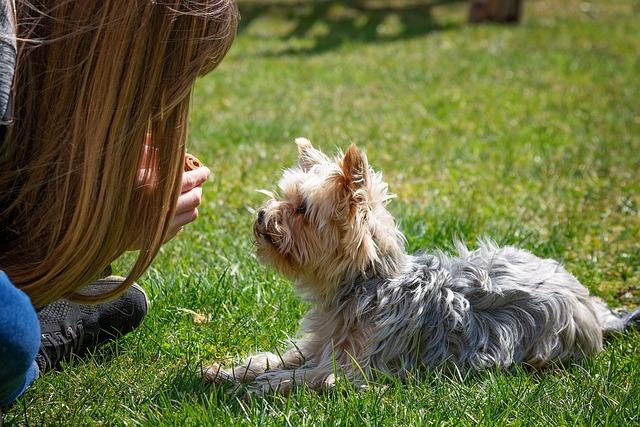Teaching your dog to roll over is not only a delightful trick that showcases their intelligence and your training skills, but it’s also a wonderful way to strengthen the bond between you and your furry friend. This guide will walk you through the steps of teaching this fun and impressive command with patience, positivity, and plenty of treats. Whether you’re a seasoned dog owner or a first-time pet parent, these techniques are designed to be simple and enjoyable for both you and your dog. So, grab your treats, find a comfortable spot, and let’s embark on this rewarding training journey together.
Choosing the Perfect Training Environment
When it comes to teaching your dog to roll over, the environment plays a crucial role in ensuring a positive and productive training session. First and foremost, choose a quiet location free from distractions such as loud noises, other animals, or busy areas. This helps your dog focus solely on you and the task at hand.
- Comfort is key: Opt for a soft surface like grass or a carpeted area to prevent any discomfort when your dog rolls over.
- Lighting matters: Ensure the area is well-lit so your dog can see your cues and body language clearly.
- Temperature control: Avoid training in extreme heat or cold, as this can make your dog restless and unfocused.
Additionally, consider the time of day. Training sessions are often more effective when your dog is neither too tired nor too energetic. A calm yet alert state of mind will maximize their ability to learn and respond to your instructions.

Mastering the Basic Commands Before Rolling Over
Before diving into the exciting world of teaching your furry friend to roll over, it’s crucial to ensure they have a solid grasp of fundamental commands. Basic commands like “sit,” “stay,” and ”lie down” are the building blocks for more complex tricks. Mastering these will not only make the learning process smoother but also strengthen the bond between you and your dog. Here’s why each of these commands is essential:
- Sit: This command is often the first taught because it’s simple and lays the groundwork for impulse control. A dog that sits on command is calm and ready to learn.
- Stay: Teaching your dog to stay is about patience and discipline. This command helps your dog understand boundaries and enhances their ability to focus.
- Lie Down: A precursor to rolling over, this command ensures your dog is in the correct starting position. It’s also a calming posture that helps them relax and prepare for new challenges.
Once these basics are mastered, you’ll find your dog more responsive and eager to learn the fun trick of rolling over. Each command acts as a stepping stone, building confidence and paving the way for successful training sessions.

Step-by-Step Guide to Teaching the Roll Over Trick
Begin by selecting a quiet, distraction-free area where your dog feels comfortable. Start with your furry friend in a down position. Hold a treat close to their nose, slowly moving it towards their shoulder. As your dog’s nose follows the treat, they will naturally begin to lean to one side. At this point, encourage them by using the command “roll over” in a cheerful tone.
- Reward immediately: As soon as your dog completes the roll, offer the treat along with plenty of praise.
- Repeat consistently: Practice in short sessions daily to build muscle memory and confidence.
- Patience is key: Some dogs may take longer to learn this trick, so keep your approach positive and encouraging.
Gradually, as your dog becomes familiar with the motion, try the command without guiding them with the treat. This helps transition from a lure to a verbal command. Remember, every dog learns at their own pace, so celebrate small victories and enjoy the bonding process.

Troubleshooting Common Training Challenges
Teaching your dog to roll over can be a delightful experience, but like any new trick, it may come with its own set of challenges. Here are some common issues and helpful tips to overcome them:
- Short Attention Span: Dogs, especially puppies, can get distracted easily. Keep training sessions brief and engaging. Aim for 5-10 minute sessions and incorporate plenty of praise and treats.
- Fear of Rolling: Some dogs may be hesitant to roll over due to fear or discomfort. Ensure your dog feels safe and comfortable by practicing on soft surfaces and using a gentle, encouraging tone.
- Lack of Motivation: If your dog seems uninterested, try experimenting with different rewards. Some dogs respond better to verbal praise, while others may need a high-value treat to get excited.
Remember, patience and consistency are key. Celebrate small victories and build up gradually to keep your furry friend motivated and eager to learn.

